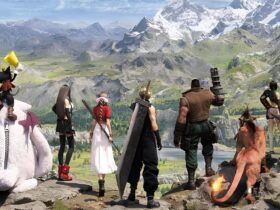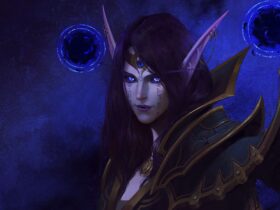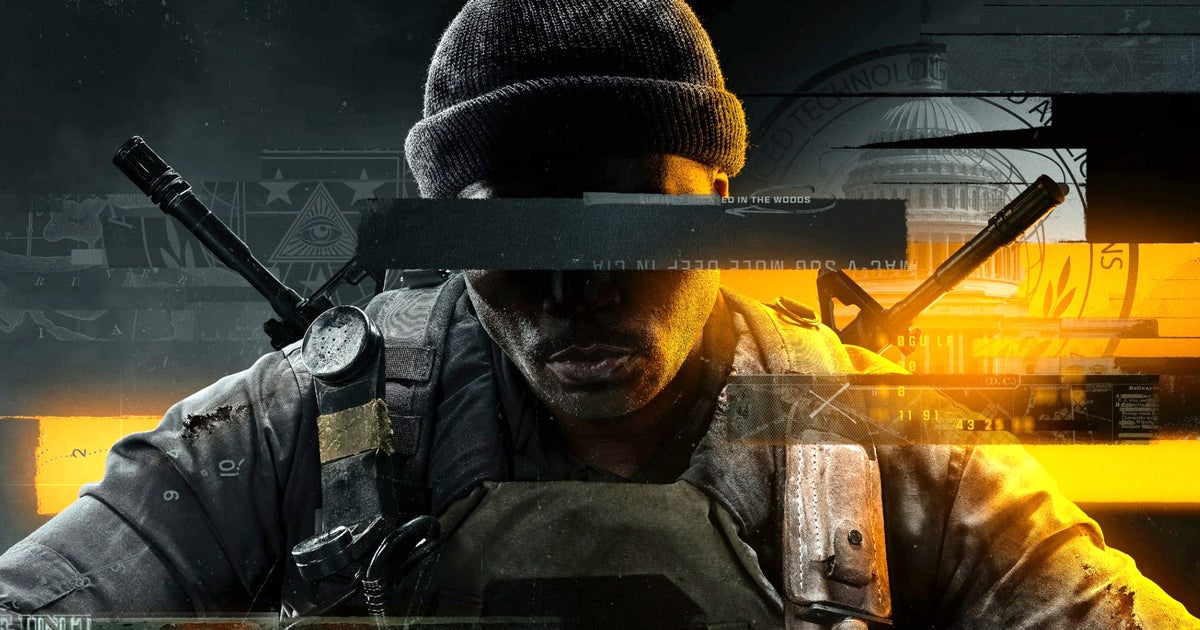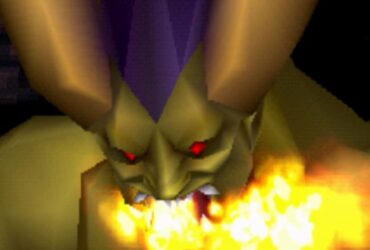Some excellent enhancements make this the ultimate version of Dragon Quest III, but it could still do more to make it wholly welcoming to newcomers.
When meeting someone for the first time, you don’t tend to start by eviscerating their personalities and pointing out all of their deepest flaws, but Dragon Quest III HD-2D Remake doesn’t shy away from insulting you and getting straight to the point. This is an old-school JRPG where how you approach your stats matters and it won’t hold your hand to guide you through it. There are dragons. There are quests. And there are a whole lot of deaths.
Dragon Quest III HD-2D Remake review
To be fair to Square Enix, it does try to hold your hand a little as you form a party and travel the world to fight the archfiend Baramos. You’re given difficulty options and battle speed adjustments, but it also sticks steadfastly to the original Dragon Quest III’s core fighting and story systems. Being a remake of a game that first released in the late 80s, it inherently feels dated even with all of the changes. It tries valiantly to walk that thin line of appealing to nostalgia while accommodating modern conveniences, but it often stumbles as it leans more heavily to the side of the original game.
The HD-2D overhaul is stunning. Blocky sprites are replaced by ones with much higher detail, and they’re placed on 3D backgrounds with a camera tilt that still retains the proportions of the old sprite style. It looks exactly how you remember old games felt to play – the goggles of nostalgia made real – only everything’s a little smoother now thanks to its new autosave, a greater number of places to save more generally, objective markers to help direct you, and an easier way to teleport between visited locations. There are also a few new features such as some extra story chapters, monster battle arenas, and even a new Monster Wrangler class to add to your team, which lets you learn different monster attacks and turn them back on your enemies. However, things start to look a little rusty once you start getting a few fights under your belt.
Being an old-fashioned turn-based RPG, fights involve selecting attacks and spells et al before watching them mash a crowd of monsters. It’s a lot like Square Enix’s older Final Fantasy games, except Dragon Quest has never truly tried to reinvent itself over the years by adding more advanced systems or new twists to familiar concepts. Instead, it’s just that age-old back and forth of trading blows, and in Dragon Quest III in particular, you’re often fighting a lot more monsters than you’re perhaps used to in other RPGs.

Of course, with more enemies bearing down on you at once, the more damage they deal in the process, and healing is a real problem throughout in this HD-2D Remake. You can let each of your party members choose their own attacks to save time inputting commands yourself, and you can even try to steer them with tactical profiles such as ‘conserve MP’ or ‘go all out’. Ultimately, though, you’ll need to either switch to inputting things individually to keep everyone alive, or do a whole lot of level grinding to even stand a chance of making it through battles unscathed.
I did try dropping the difficulty down from the normal ‘Dragon mode’ to ‘Dracky mode’, but all that did was stop me from being able to die rather than actually changing the difficulty of the fights. It’s no fun knowing the only reason you’re getting through battles is because you can’t drop below 1HP – though being beaten to a pulp and barely making it through was still more preferable to endlessly grinding for EXP just to make it safely across an open stretch of the world map to the next town or dungeon. Sure, it may be easier, and maybe I’m a wuss, but I’d sure enjoy the illusion of a fair fight rather than being dragged through by my hair.



It also doesn’t make much sense – why add a mode where you can’t die as an option but not be able to turn off random encounters? I can’t argue that concessions have been made to make things easier, in the same way that wearing shoes makes hiking easier. But it also seems like an oversight not to take things further. Square Enix’s recent Final Fantasy Pixel Remasters and the Switch version of Final Fantasy IX, for instance, did this very well – you could enjoy the pure version if you wanted to, but you could also grease the wheels a bit by adding loads of options to speed things up, avoid random encounters and ensure all your hits do loads of damage. Everyone could enjoy the sights, even if you took a maximum hits cable car to get there.
I still can’t get over how much patience it must have taken us as kids to get through games like this – has grinding to progress ever been fun? I get that Dragon Quest is all about preserving things as they are, but adding more options doesn’t take away from the achievement of going for the purist approach.

| Image credit: Eurogamer/Square Enix
Thankfully, the world is a joy to explore, even when you’re being pulled into a fight every 30 seconds. The story guiding you through it may not be particularly complex (you’re mostly urged to go to certain places to pick up an object or fight someone just because), but its sense of adventure remains strong throughout, as every nook and cranny is filled with secrets. The map is covered with hidden spots and treasure troves of sparkling items, and the towns themselves are stuffed with loot and hidden monsters to recruit for the new battle arena. There’s still nothing quite as satisfying as that old-school feeling of strolling into someone’s home and raiding their cupboards for medicinal herbs and armour.
The world really opens up once you acquire a boat and your adventuring can take a more freeform approach, but the HD-2D Remake’s lack of a guiding hand is felt even more keenly here. In this part of the game, you’re tasked with collecting orbs from around the globe, but each one usually requires you to get an item from somewhere else first, and it never explains where. Even with all the objective markers present, the temptation to reach for a guide to the original game is extremely strong. Even then, there’s still a lot of backtracking and teleporting around the map involved to find what you’re after. It’s like a puzzle where you have to put together partially completed sections and hope that the next spot will have the missing piece you need to bring it all together. There is, admittedly, a very satisfying twist that makes all this rigmarole worth it, but the game will test your patience to get there.

Other additions, such as the remastered score, are beautiful and add an extra, soaring layer to that sense of adventure and exploration, but others seem unnecessary. Important sections of dialogue are now fully voiced, which sounds good in theory, but rarely do they add anything to the experience. It also leads to quite a few awkward situations with accents. Alefgard is based loosely on our world, with different areas based on places, such as a prospecting town full of Americans and a palatial Florentine city where everyone speaks in cartoonish Italian accents. There’s also a town full of white people who speak in thick, stereotyped Indian accents, which will definitely raise some questioning eyebrows, even though the source material is over 35 years old.
Dragon Quest III HD-2D Remake accessibility options
Adjustable difficulty. Zoomed in option for the camera. Separate volume sliders for music, voices and effects. Battle speed can be adjusted. Adjustable text display speed. Autorun can be turned on. Quest help and objective markers can be switched on. Recall feature to revisit past conversations for hints.
Dragon Quest III HD-2D Remake has left me with such mixed feelings. As a remake of a classic, it is stunning – that game does an amazing job of capturing that sense of nostalgia and making it fit a modern screen. Its story may be old and simple, but there’s a cosiness to that. I may not have the patience for random encounters anymore, but playing with such a vast array of weapon types, class types and stat-effecting personalities was still mostly fun even if I was regularly getting mullered by monsters.
That sense of retaining its history is both the game’s blessing and its curse. For every change that enhances the original, there are points where it hasn’t evolved enough and ends up holding itself back in the process. There’s still a good game to be discovered here, and if you’ve played the original, you’ll undoubtedly enjoy this new remake. If you’re a more casual Dragon Quest or JRPG liker looking to check out a classic, though, you may well find yourself bouncing off it when the battles start feeling like a bit of a slog.
A copy of Dragon Quest III HD-2D Remake was provided for review by publisher Square Enix.
fbq('init', '560747571485047');
fbq('track', 'PageView'); window.facebookPixelsDone = true;
window.dispatchEvent(new Event('BrockmanFacebookPixelsEnabled')); }
window.addEventListener('BrockmanTargetingCookiesAllowed', appendFacebookPixels);












Leave a Reply